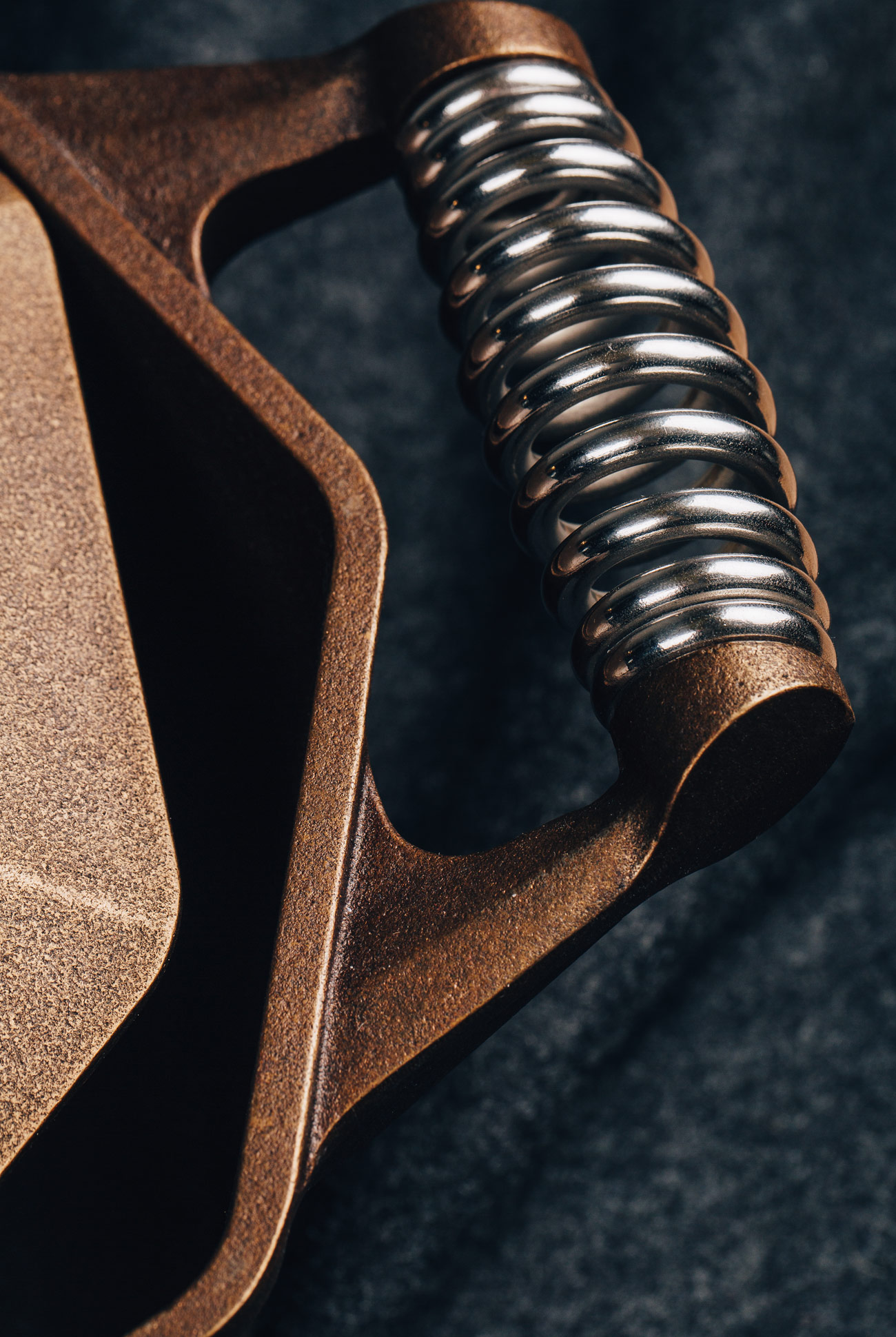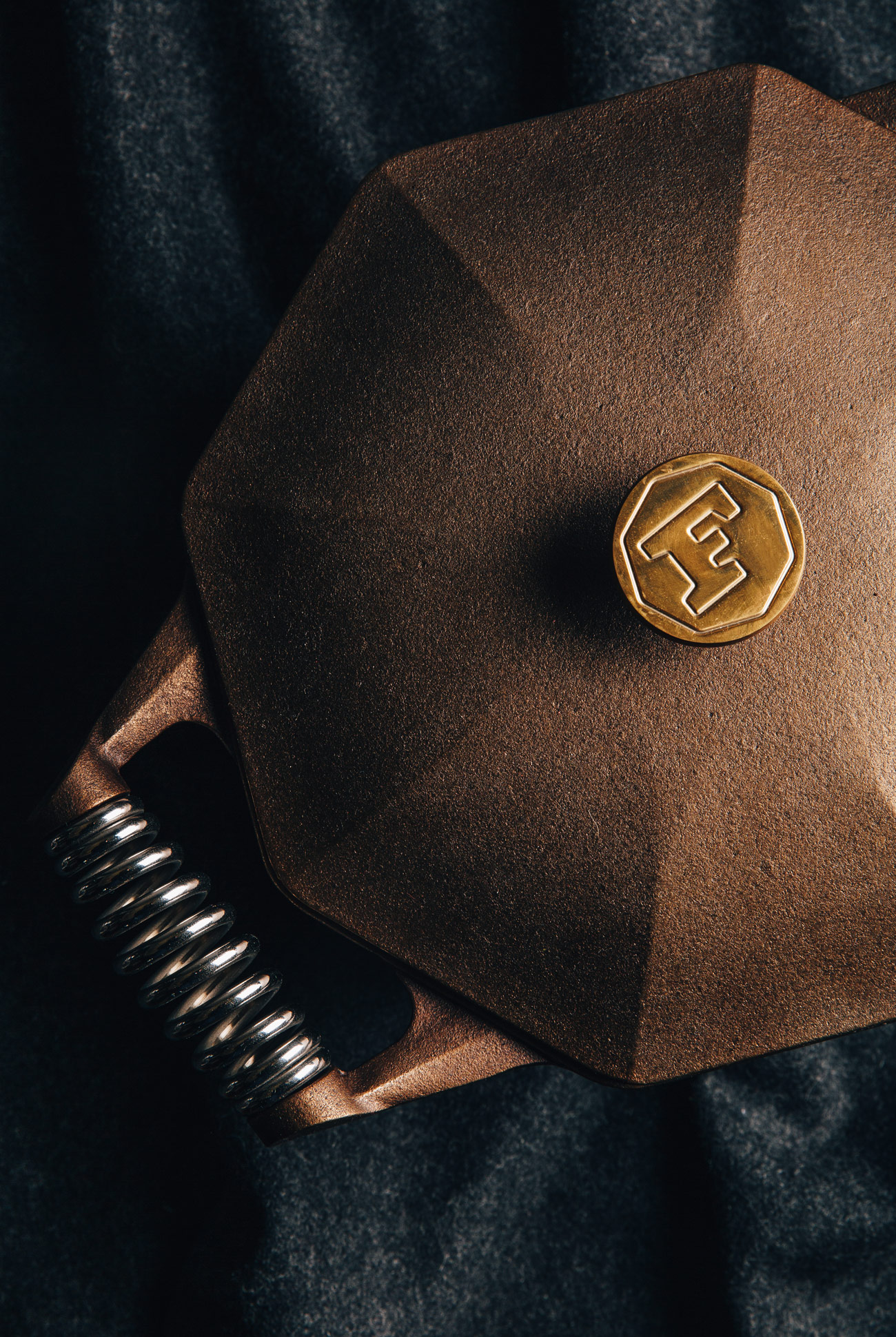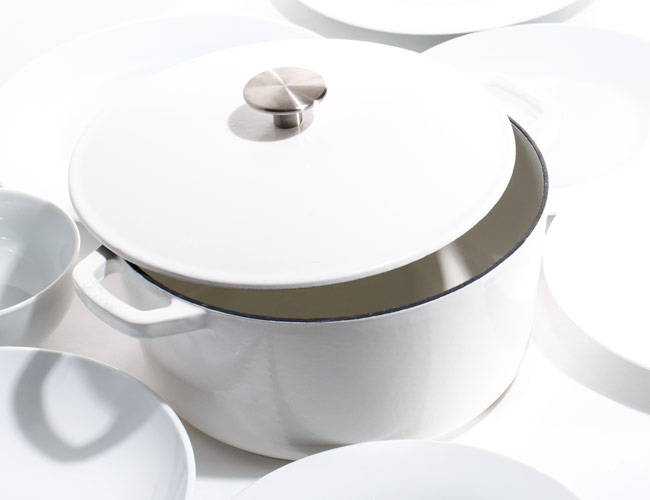Three features make a Finex product easy enough to recognize blindfolded: heft, a hexagonal shape and coiled stainless steel handles. Since 2012, the company has cranked out skillets in all shapes and sizes, and its newest — and priciest — endeavor, the five-quart Dutch oven, doesn’t fall far from the tree.
According to Finex, a Dutch oven was its most-requested product release, and given that Finex’s ever-growing fanbase is willing to buy into anything that comes out of the company’s Portland, Oregon, workshop, we can assume a legion of die-hards bought in early.
The Good: This Dutch oven weighs 12 pounds empty, and the weight does make a difference in maintaining even, consistent temperatures in the oven. The seasoning it ships with is also better than expected — it’s not uncommon to see manufacturer-applied seasonings be little more than a worthlessly thin coat of oil only there to change the product’s color (cast iron is a light grey before seasoning). Seasoned cast-iron cookware also fares much better than they’re enameled counterparts over the open flame — grill or campfire.
Who They’re For: The price ($300) is extremely prohibitive. To me, the product is mostly for those already invested in other Finex products. It would also make a unique gift to a person or couple who camps regularly or has a firepit.
Watch Out For: It feels odd recommending a prospective buyer to “watch out for” the price of a product, but this Dutch oven warrants it, and not because it’s a Dutch oven, but because it’s a classic Dutch oven in that it has no enamel coating. It’s not a stretch to say purely cast-iron Dutch ovens are often purchased because they’re inexpensive, hence you won’t feel as bad situating it in a roaring fire or beating it up a bit.
The lack of enamel coating also means you’ll need to season it just like you would a skillet, except there are many more cracks and crevices that are easily missed. The Finex piece also isn’t given the same machined-smooth surface its skillets get, which is a minor but bothersome drawback.

The lid is suspect. While true that a Dutch oven’s lid should fit to allow some steam escape to cook down liquids and make for a richer final dish, the lid on the Finex Dutch oven I tested was decidedly unfitting.
Alternatives: As you may expect, it’s Lodge. For the things the un-enameled Dutch oven is best for — that is durability, outdoor and high heat cooking — you’ll be hard-pressed to find an example that does the job as effectively for the dollar as Lodge’s Five-Quart oven. It’s retails around $40, cooks what you need proficiently and its lid fits damn near perfect. Admittingly, the layer of seasoning it ships with isn’t all that good, so I recommend cranking your oven way up and adding a layer or two of your own seasoning before use.
Review: For my money, the price gap between a quality Dutch oven and a shitty Dutch oven is all in the enamel coating — how evenly it’s applied, how well bonded it is to its underlying cast-iron. That, and a lot of prestige tied to a certain je ne sais quoi (it’s because they’re French), is what drives Le Creuset and Staub’s seemingly unreasonable price points.
Finex’s newest product is firmly three to fives times the price of the competition and, frankly, I can’t decipher why. The speed-cool coiled handles do cool moderately faster than typical handles, but once you’ve heated the oven through, the handles are going to be untouchable all the same.

The lid, as mentioned, allows far more steam to escape than usual. I tested the effectiveness of its fit by boiling five cups of water for 10 minutes and measuring how much water boils out in that time. Where my Le Creuset released almost exactly one cup, my Staub released barely half a cup and the Lodge a bit under a cup, the Finex released about a cup-and-a-half. A half cup difference between the Le Creuset and Finex piece may not seem relevant, except that the main reason to reach for a Dutch oven pertains to its long cooking capabilities.
I did come to appreciate the Finex’s ability to hold fast to temperature — once heated, I feel you could throw an actual bucket of ice into it and it’d hold temp (the extra heavy base helps there). The Finex Dutch oven is five pounds heavier than the Lodge I recommended, and it performs much better in this regard.
Perhaps most confusing was the lack of a machine-smoothed surface. As mentioned, Finex’s cast-iron skillets have a silky smooth, almost perfect non-stick surface out of the box. But the Dutch oven doesn’t. You could argue meals prepared in a skillet more often require a non-stick surface, and you’d be right, but for $300 I don’t think it’s unreasonable to expect a Dutch oven that I could, if I felt like it, sear and cleanly remove a piece of fish from.
Verdict: Finex’s five-quart Dutch oven makes for a cool gift for a cook who enjoys the outdoors, but I don’t think its extras and innovations create enough of a performance gap to warrant the $300 price tag.
Key Specs
Materials: Cast-iron body, stainless steel handles
Weight: 16 pounds
Cooking Surface: 8.2 inches
Volume: 5 quarts
Choosing a Dutch Oven used to be a question of how much you were willing to spend – go all-in for a Le Creuset or Staub or try and skate by with a Lodge. Milo wanted to change that – did they? Read the Story


